A little background on the Bay Bridge failure
October 29, 2009 at 6:17 PM by Dr. Drang
You probably heard about the structural failure on the San Francisco/Oakland Bay Bridge earlier this week. When I went looking for information on the nature of the failure, the news articles I found were disappointing. It’s not that the reporters did a poor job, its just that their focus—which was, quite rightly, on how the failure would affect their local readers and viewers—didn’t match mine. I wanted to know exactly what failed, and although that information was in the stories, I had to tease it out of the photos and certain tidbits in the text. This is what I found.
The failure occurred in the eastern portion of the bridge, between Oakland and Yerba Buena Island. This section is in the process of being upgraded; on Labor Day weekend, workers found a crack in a steel member of the bridge, and temporary reinforcement was added to that member.
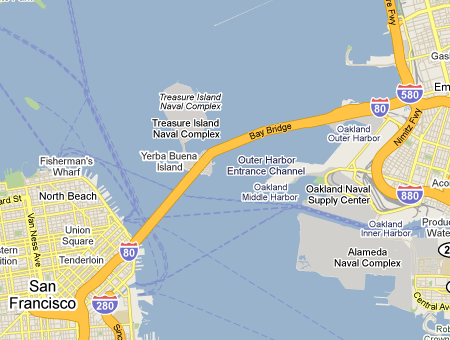
The eastern section has a truss structure, and some of its members are eyebars, which are used to carry tension loads. It was one of these eyebars that was (and apparently still is) cracked.
Eyebars are flat plates cut into a sort of dogbone shape with a hole at each end.
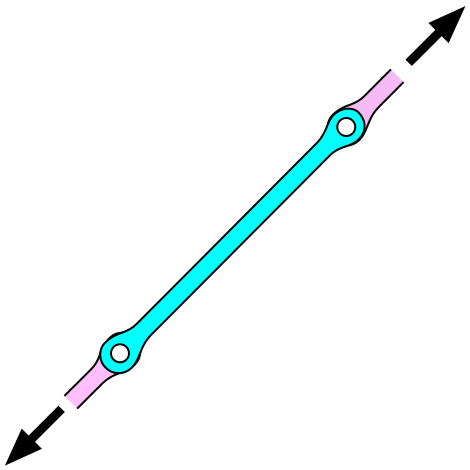
Two or more of these plates are arranged parallel to each other to make a complete eyebar assembly (the word eyebar can refer to either a single plate or an assembly). In the Bay Bridge, the eyebar assemblies consist of four plates, as you can see in this photo taken from the side (the photos I’ll be using here are from this San Francisco Chronicle set).
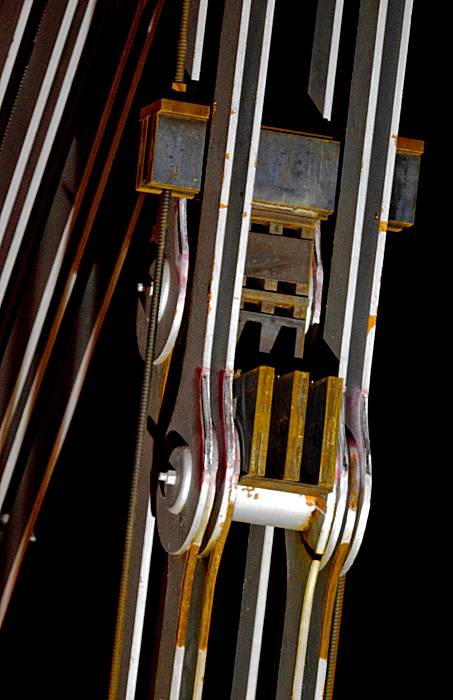
This photo might be a bit confusing because it shows two eyebar assemblies, one in the foreground and one in the background. Ignore the background assembly and note that foreground assembly has four eyebar plates: two closely spaced plates on the left side and two closely spaced plates on the right.
Eyebars are connected to each other and to other parts of the structure via large steel cylinders, called pins, that are driven through the holes in the ends. The reason the eyebars are widened at the ends is to make up for the material lost by the holes.
(Take another look at the photo above. See the dark triangle in the innermost right eyebar plate under the pin? I can’t decide whether that’s the crack that led to the repair or just an oddly-shaped discoloration on the surface of the steel. If it’s the crack, it’s a nasty one—running all the way from the outer edge to the hole.)
Update 10/31/09
The fourth photo on this page confirms that what we’re seeing in the photo above is the crack that led to the repair, not just a rust stain. Scary.
If you’re thinking that an eyebar is like a giant, highly elongated link in a bicycle chain, you’re thinking right.
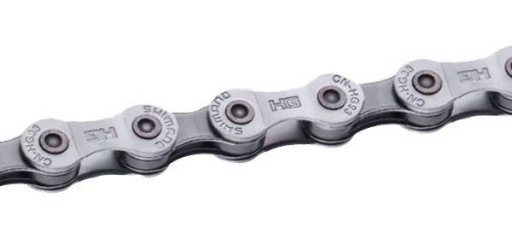
(Image from bike-parts-direct.co.uk.)
The reinforcement consisted of a set of long steel rods and a pair of anchorages, called saddles. The saddles are attached to the structure just beyond the ends of the cracked eyebar, and the rods are anchored in the saddles.
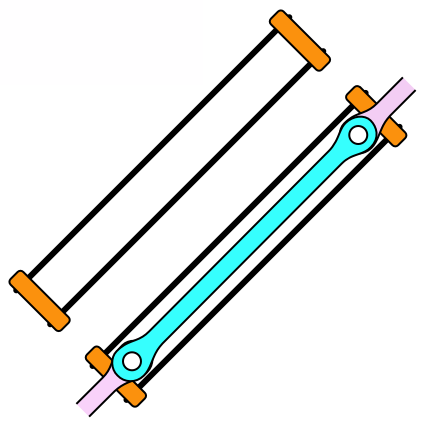
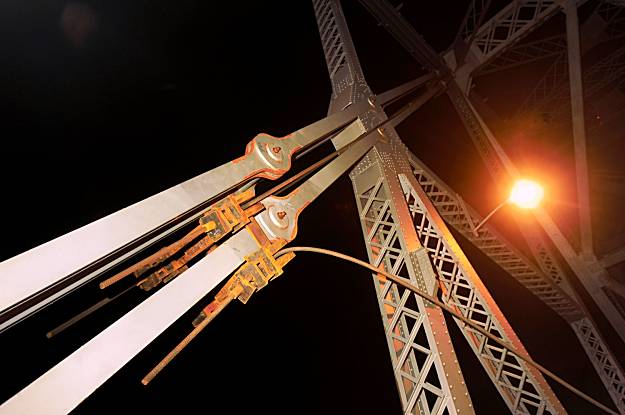
The rods were meant to reduce the load carried by the eyebar itself. Installing reinforcement like this in an existing structure can be tricky. If you don’t tighten the rods enough, they won’t reduce the load on the eyebar and will be ineffective. If you overtighten the rods, you can cause a premature failure in them or in a saddle or in the structure to which the saddle is attached. Overtightening can also distort the original structure.
According to the Chronicle article, two rods (out of what looks like four) and part of a saddle broke and fell onto the roadway. Don’t assume this means that the rods were overtightened; failures can come from lots of sources, and the current thinking is that vibration-induced fatigue—or possibly abrasion; the article mentions rubbing—led to the failure of the rods. Fatigue is failure due to repeated loading and unloading of a part. The classic example (mentioned by the Caltrans chief engineer in his explanation) is that of a paper clip being bent back and forth until it breaks.
If fatigue is the cause of the failure, the stresses in the rods must have been very high for them to have failed in less than two months. Hard to imagine a repair with such high stresses was allowed.
